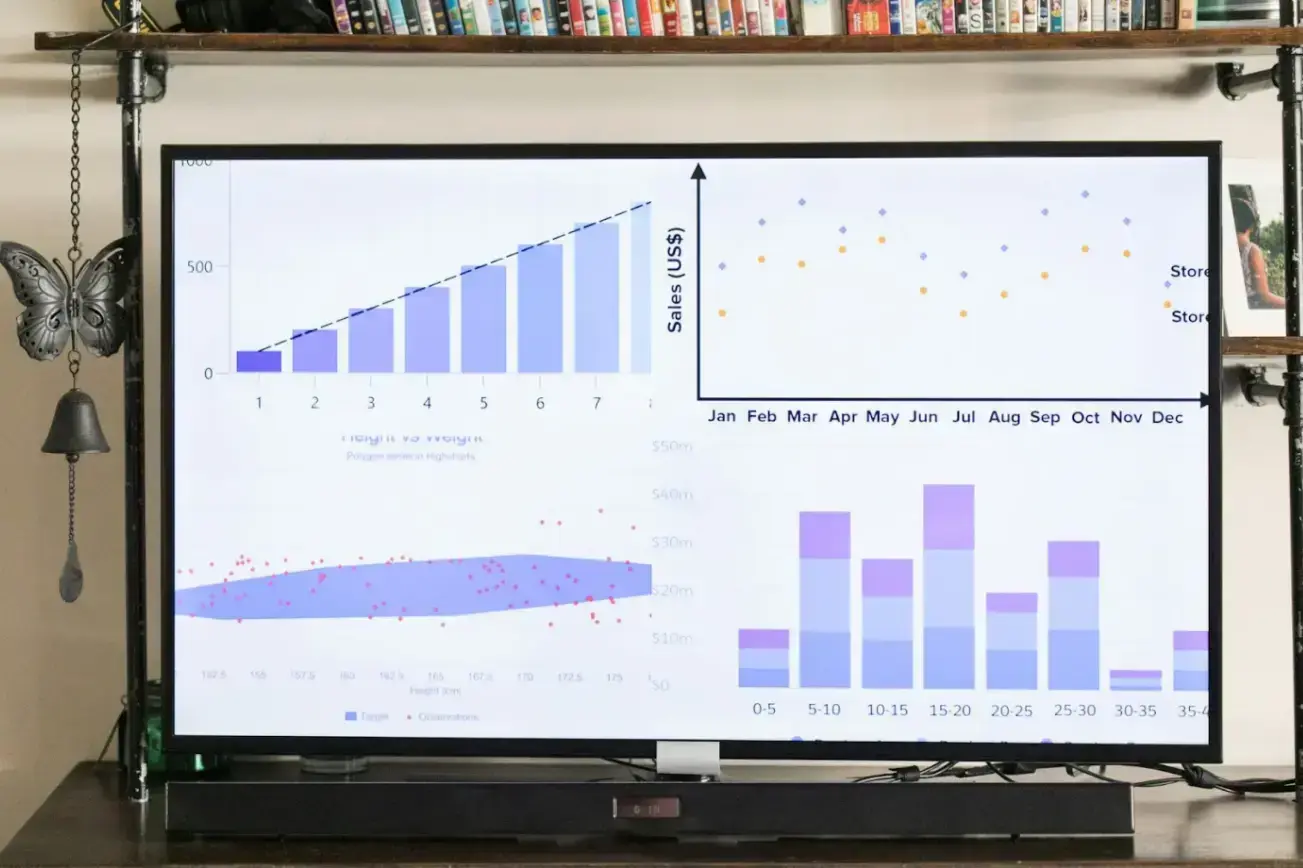In the competitive B2B landscape, understanding your clients goes far beyond knowing their name and industry. The true keys to sustainable revenue growth lie in accurately predicting which clients will become long-term, high-value partners and which possess significant untapped expansion potential.
Traditional sales intuition is valuable, but data-driven insights derived from Know Your Business (KYB) processes provide an unprecedented level of objective foresight.
By systematically analyzing KYB data, organizations can move from reactive relationship management to proactive, strategic partnership building.
This approach significantly enhances customer lifetime value (CLV) and reduces churn. This post examines four key ways KYB intelligence facilitates the prediction of client lifespan and identifies expansion opportunities.
1. Assess Foundation Stability to Predict Client Longevity
The bedrock of predicting client lifespan is understanding the fundamental health and stability of the business entity itself. KYB data provides a wealth of objective indicators that signal resilience or vulnerability.
Key factors include the company's legal standing and registration status. This includes whether the entity is active and in good standing in its jurisdiction of incorporation.
Persistent compliance issues or administrative dissolutions are major red flags for future instability.
Financial health proxies also offer crucial insights. Metrics such as the company's creditworthiness scores or payment history trends gleaned from trade references reveal their ability to fulfill long-term contracts and weather economic downturns.
Ownership and leadership history are also significant factors. A track record of stable leadership and ownership suggests continuity and reliability.
Conversely, frequent, unexplained changes in directors or significant shareholders can indicate internal turmoil or strategic pivots that might disrupt the client relationship and longevity.
Analyzing these foundational elements provides a robust initial assessment of a client's structural integrity.
2. Use Predictive Modeling to Flag Churn Risk

Source: Pexels
Moving beyond static assessment, KYB data fuels sophisticated predictive models that identify clients at risk of churn and estimate potential lifespan. This involves analyzing patterns and changes over time.
For instance, a client experiencing a gradual but consistent decline in its financial health scores, coupled with an increase in legal filings (such as Uniform Commercial Code liens or judgments), presents a significantly higher churn risk profile than a stable counterpart. Monitoring these trends is essential.
Changes in business scope or structure are equally critical predictive factors. A client undergoing frequent restructuring, significant mergers or acquisitions, or radical shifts in its stated business activities might experience internal disruption impacting service continuity or strategic alignment with your offerings.
Additionally, operational footprint shifts serve as strong indicators. Actions such as closing multiple locations without corresponding growth elsewhere or dramatically scaling back operations can signal potential distress.
By correlating these dynamic KYB signals with historical churn data within your client base, models can assign accurate churn risk scores, enabling proactive retention efforts.
“Early identification of at-risk customers allows businesses to deploy tailored retention efforts, customized engagement strategies, and loyalty initiatives that reduce attrition and build lasting client relationships.”
– Shantanu Sonune et al., Customer Analytics Researchers
3. Spot Expansion Potential Through Growth Signals

Source: Pexels
While predicting longevity is vital, identifying clients ripe for expansion is the engine of sustained revenue growth. KYB data reveals a powerful signal indicating a client’s capacity and trajectory for increased business.
Sustained growth patterns are paramount indicators.
Look for consistent upward trends in financial metrics, increasing employee counts (often verifiable through KYC sources), and expanding operational footprints, such as the opening of new branches, warehouses, or facilities. These signals demonstrate scalability and market success.
Strategic shift and diversification also present significant expansion opportunities.
If a client enters new markets, acquires complementary businesses, or launches new product lines requiring additional services you provide, their needs will naturally evolve.
KYB data tracking changes in NAICS/SIC codes, registered trademarks, or subsidiary formations can uncover these strategic shifts early.
Funding events are also potent signals of imminent growth. Substantial venture capital investments, private equity backing, or significant debt financing rounds signal not just stability, but an explicit mandate for rapid scaling.
This often creates immediate needs for enhanced operational support, technology infrastructure, or specialized services, representing clear avenues for expansion of your offerings.
4. Monitor Operational Health for Real-Time Client Insights

Source: Pexels
Predictive insights are only valuable if they are timely and actionable.
This is where continuous monitoring of KYB data becomes indispensable for effectively managing both lifespan and expansion potential. Static, point-in-time checks are insufficient in a dynamic business environment.
Real-time or near-real-time alerts on critical changes provide the agility needed for proactive engagement.
For example, an alert indicating a sudden lapse in good standing status allows an account manager to immediately inquire whether this was an administrative oversight or signals deeper financial or operational trouble, enabling swift intervention.
Monitoring for significant legal filings (lawsuits, major lines, bankruptcies) provides an early warning system for existential threats to the client relationship.
Critically, maintaining awareness of ongoing compliance and licensing status, especially in regulated industries, is non-negotiable. A company that fails to maintain necessary licenses jeopardizes its ability to operate and, consequently, its value as a client.
Efficiently tracking these dynamic elements across a large portfolio necessitates robust automation.
Leveraging a comprehensive data provider, such as a Secretary of State API that offers real-time status updates, filing monitoring, and registered agent changes directly sourced from all U.S. jurisdictions, ensures access to the most current and accurate operational health pulse without manual effort.
This continuous visibility forms the bedrock of truly proactive relationship management.
“Prompt analysis and continuous oversight of operational workflows are critical for detecting compliance issues, addressing discrepancies swiftly, and maintaining a competitive edge in fast-moving markets.”
Frequently Asked Questions
1. How does KYB data differ from standard CRM data for predicting client behavior?
While CRM tracks interaction history and subjective notes, KYB provides objective, external insights into a client’s legal and financial health, such as regulatory standing, ownership changes, UCC liens.
This uncovers risks and opportunities invisible to sales teams, like silent financial decline or undisclosed expansion plans.
2. Can KYB really predict churn better than customer satisfaction scores?
Yes, but for structural churn. Satisfaction scores reflect sentiment, but miss existential risks(compliance failures, leadership turmoil).
KYB flags early-warning signals like declining credit scores or frequent legal filings that often precede business failure, even if the relationship seems healthy.
3. What’s the most actionable KYB signal for identifying expansion potential?
Strategic shifts tracked via NAICS/SIC code changes or new trademarks. Pair this with funding events(VC rounds) for high-confidence expansion targeting.
4. How can we automate KYB monitoring without manual checks?
Integrate with real-time data sources like Secretary of State APIs that alert you to critical changes like loss of “good standing” status, new liens, or leadership turnover. This enables proactive outreach before issues escalate, turning compliance tools into growth engines.
5. Is KYB data relevant for small/private clients with limited public records?
Absolutely. Even basic KYB proxies like payment history trends (from trade references) and operational footprint changes(new locations/closures) reveal stability. For private firms, track leadership consistency and licensing status. Frequent director changes or lapsed permits signals instability.
Conclusion: Make KYB a Strategic Revenue Tool
KYB data transcends its traditional role in compliance and onboarding; it is a strategic goldmine for predicting B2B client behavior.
By systematically analyzing foundational stability, building predictive churn models, identifying clear expansion signals, and implementing continuous operational health monitoring, businesses gain an unparalleled understanding of client lifespan and growth potential.
This intelligence transforms account management from a reactive cost center into a proactive, strategic function focused on maximizing the lifetime value of each relationship. Investing in robust KYB data aggregation, enrichment, and real-time monitoring capabilities is now a necessity.
This is particularly true for comprehensive sources that cover legal standing, financial proxies, ownership, and critical filings. The future of B2B revenue growth is built on knowing your business clients better than ever before.
Author Bio
Liam is a B2B strategy writer and growth expert with over a decade of experience in enterprise sales, client retention, and predictive analytics. He’s a regular contributor to top B2B marketing and fintech publications, sharing insights on utilizing KYB (Know Your Business) data to strengthen client relationships. When he’s not analyzing datasets and strategies, Liam enjoys keeping up with emerging trends in business intelligence and operational efficiency.


